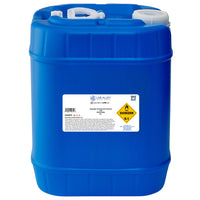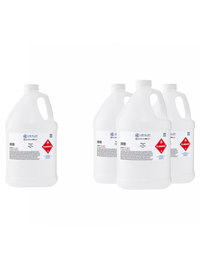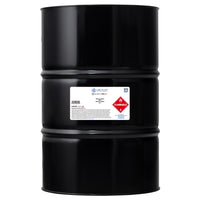Industrial

Dependable and non-toxic, Lab Alley is a trusted name in the industry, supplying companies like Disney, Stanford University, Apple, St. Jude Hospital, and many more.
 Acetone is a colorless, flammable, and highly volatile organic solvent
that is widely used as nail polish remover and paint thinner. Industrially,
acetone can be used to remove sticky or oily substances from raw textiles,
like cotton or silk, in welding to remove rosin flux, and even in metal
working as a degreaser. Electronics companies use acetone to clean
components of any and all detritus. High quality acetone can also be used
in acrylic plastics production, as well as epoxy resins and polycarbonates.
Acetone is a colorless, flammable, and highly volatile organic solvent
that is widely used as nail polish remover and paint thinner. Industrially,
acetone can be used to remove sticky or oily substances from raw textiles,
like cotton or silk, in welding to remove rosin flux, and even in metal
working as a degreaser. Electronics companies use acetone to clean
components of any and all detritus. High quality acetone can also be used
in acrylic plastics production, as well as epoxy resins and polycarbonates. Heptane, or n-Heptane
, is a straight-chain alkane (acyclic saturated
hydrocarbon), and because of its ideal chemical properties, it is one of the
most useful industrial chemicals around. In its purest form, heptane is most
notably recognized as the standard zero-point for the octane rating scale,
which measures a fuel’s ability to withstand compression in an internal
combustion engine without exploding. When placed under the immense
pressure within a gasoline engine, heptane immediately combusts causing
engine knocking (pre-ignition). Heptane is also used as a compounder in
the commercial manufacturing of rubber cement during a process called
vulcanization, which improves the elasticity and strength of the rubber
cement.
Heptane, or n-Heptane
, is a straight-chain alkane (acyclic saturated
hydrocarbon), and because of its ideal chemical properties, it is one of the
most useful industrial chemicals around. In its purest form, heptane is most
notably recognized as the standard zero-point for the octane rating scale,
which measures a fuel’s ability to withstand compression in an internal
combustion engine without exploding. When placed under the immense
pressure within a gasoline engine, heptane immediately combusts causing
engine knocking (pre-ignition). Heptane is also used as a compounder in
the commercial manufacturing of rubber cement during a process called
vulcanization, which improves the elasticity and strength of the rubber
cement. Sulfuric Acid
is a colorless, oily liquid that is extremely corrosive and
reactive. Being that sulfuric acid is one of the world’s largest volume
industrial chemicals, it is very versatile and can be used for many different
applications. In metal processing, sulfuric acid is used during the final
stages of a surface treatment process called “steel pickling” to remove rust
or any other impurities from the metal. Other than metal processing, sulfuric
acid is used as a component in chemical manufacturing to create other
acids, synthetic detergents, and even dyes. For large vehicle batteries,
sulfuric acid is combined with lead to create “battery acid”, which generates
the required voltage/energy to power these large vehicles.
Sulfuric Acid
is a colorless, oily liquid that is extremely corrosive and
reactive. Being that sulfuric acid is one of the world’s largest volume
industrial chemicals, it is very versatile and can be used for many different
applications. In metal processing, sulfuric acid is used during the final
stages of a surface treatment process called “steel pickling” to remove rust
or any other impurities from the metal. Other than metal processing, sulfuric
acid is used as a component in chemical manufacturing to create other
acids, synthetic detergents, and even dyes. For large vehicle batteries,
sulfuric acid is combined with lead to create “battery acid”, which generates
the required voltage/energy to power these large vehicles.

























